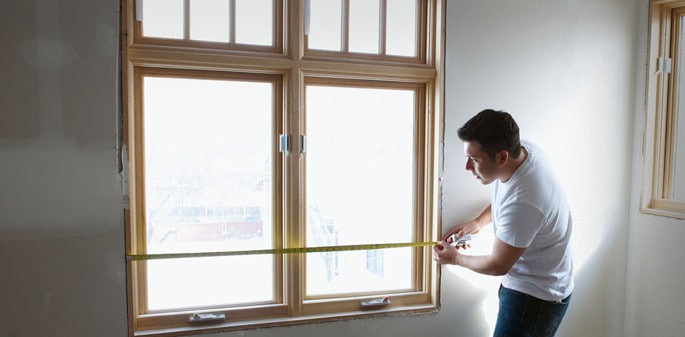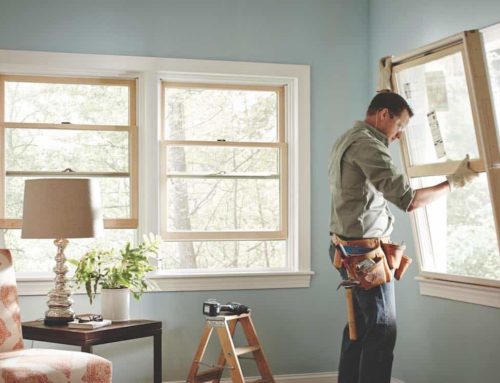Table of Contents
It’s great if you’ve decided to replace your old glass windows with new ones that are air-tight and more energy efficient. It’s obvious you want the project to start soonest possible.
Maybe you want to measure the replacement windows on your own but don’t know where to start. Well, read on through this article for tips on measuring windows for replacement.

The Items You’ll Need
Measuring windows is not a process that requires any special equipment or tools. Here are the tools you’ll require to measure the windows accurately:
- Measuring tape
- Notebook or a piece of paper
- Pencil or pen to write down the measurements
With these materials, you are good to start. Read on for more details on how you will take measurements for replacing windows.
Measuring Windows for Replacement- It’s Easy
Measuring your windows accurately for replacement will require you to take accurate measurements of the width and height. Generally, it’s not necessary to take measurements of the depth unless your wall can only accept windows under 3 inches deep. You will only measure the windows from the inside. Thus, you will not have to struggle climbing over trees and bushes outside.
Measuring the Width
You can start with measuring the width. You will need to take a minimum of three different measurements of the width at different sections of the window. You can take the first width measurement from the top section of your window, the next at the center and finally at the window’s bottom section.
The measurements should be taken from the window jambs without considering the parting beads or trim pieces. Measuring from the parting beads and trim pieces will be done upon removing the window. If the window is very tall, take extra width measurements to be more precise. Ensure you are taking measurements within 1/8 inches.
Record each and every measurement of the width on a piece of paper using a pencil or a pen. Maybe you are wondering why you have to take three different with measurements from a minimum of three different points. The reason is that the smallest measurements will be required when ordering for a new window. This will ensure you buy a fitting window that is not too small or extremely big for the existing window opening. The smallest measurement should be circled.
Taking the Height Measurements
Taking measurements of the height is similar to taking the measurements of the width. Take the height measurements from three sections of your window just like with the width.
In case your window is extremely wide, like a bow or bay window, take more measurements of the height at different sections that are spaced evenly. Just like with the width, you will ignore trims and take measurements from one jamb to the next, thereby giving you precise measurements. Again, record the measurements of the height on a piece of paper. The smallest measurement should be circled.
Checking Whether Your Window Opening is Square
Once done with taking the measurements, check whether the window opening is square. All four corners should be 90 degrees. Measurements of the diagonals should be equal in length. It’s necessary to check whether the window opening is square for the window installer to know beforehand if they may be required to make adjustments or add shims to an opening that is not square after removing the older window.
To measure the diagonals, start from one corner, say the top right-hand corner to the bottom left-hand corner and note down the measurement. Do the same from the window’s top left-hand corner to its bottom right-hand corner and note down the measurements. If the two diagonals are similar in length, then your window opening is a perfect square. As long as the length of the two diagonals ranges within a 1/4 inch difference, everything is fine. Don’t have any worries in case the variance is slightly bigger since professional installers will add wooden shims on the opening to ensure the window fits in a square. If the differences are too large, then some adjustments will be made on the opening, or the replacements will be customized when ordering.
Measuring Arch Top or Architectural Windows
Taking measurements of windows with a round or curved top may be slightly trickier at first. However, it’s still relatively easy. There’re different variations in specialty windows. Most of these windows have some curvature that can be measured whenever a replacement is needed.
You can start by taking measurements of the square-shaped section of the arch window while excluding the curved section. Once done, take the measurement of the arch by starting from its lowest point to its highest point. This will be like the middle point of the arch window. Again, avoid including trims when taking measurements of the arch top window.

Making an Order for Replacement Windows – Hiring a Professional Window Company vs. DIY
Now that you’ve learnt how to take measurements of the replacement windows, the next thing to do is deciding whether you will do the replacement yourself or you’ll hire a professional window installation company upon providing them with the window measurements you took.
In case you choose DIY, remember that you will not have any helping hand to verify the measurements. This may lead to ordering the wrong windows in terms of the size such that they might be too small or too large for the window openings. Moreover, most window dealers and manufacturers will shy away from offering warranties on the windows since they will not be installed professionally.
The safest way is hiring a professional window company to undertake all the installation work. For instance, you will not have any worries about ordering for replacements. Also, a professional company will give you peace of mind by knowing that the replacements will come with a warranty since the installation will be done professionally. Hiring professionals may cost you, but ultimately, you will recover these costs from lower energy bills and the increased value of your home upon installing new windows.
Related Articles
-
Replacement Windows vs Storm Windows
-
Energy Ratings for Glass Windows Explained
-
Eight Window Replacement Myths Busted
-
Seven Factors that Affect the Overall Cost of Replacing Glass Windows
-
What You Should Know About Replacing Windows in Historical Homes





